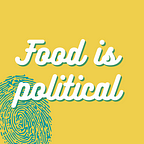Awadh’s dearest makes its way to Britain’s pubs
From the royal kitchen of the Nawabs of Oudh to pubs and supermarkets in Britain, here’s the story of a dish that has voyaged across centuries and seas.
Arguably an Awadhi delicacy, the Nargisi Koftas’ moniker is inspired by the Poet’s Daffodil, a delicate flower that blooms with the hopes of a beautiful spring. With an intoxicating aroma, it has milky white petals surrounding a bright yellow cup, resembling the layers of a boiled egg sliced in half.
Rumored to have made its way from Persia to Lucknow, the Nargisi Kofta is a decadent dish that shows technique, textures, and flavors. It’s skillfully cooked to wrap lamb mince around a hard-boiled egg, which is then fried and served with gravy. It’s often served during Ramzan, and its renditions include the koftas being served with biryani, or as a lone snack. The complexity arises from a precisely boiled egg and a fine yet flavourful lamb mince that can drape the egg without disintegrating when dropped in hot oil.
The Nargisi Kofta is still hotly debated, with many claiming it as an Awadhi specialty, while others claim its ancestry to be Mughlai. The two cuisines are often confused as synonymous, yet traceable differences exist between the two cuisines, despite both holding prominent positions in Uttar Pradesh. Awadhi cuisine arose from the kitchens of the Nawabs of Oudh and draws inspiration from Mughlai, Hyderabadi, Kashmiri, and even Bhojpuri cuisines. It stands out due to it’s slow and gentle cooking techniques using equipment like degh and the exquisite balance of spices it strikes. Mughlai cuisine, on the other hand, is equally complex yet imparts richness by playing with ingredients such as cream and yogurt, and is said to have strong Turko-Persian roots. Its influence spans the local cuisine throughout North and Central India. The two debated ancestries are evident with variations in the gravy of the Nargisi Kofta, spanning from tomato-based gravies to those that incorporate yogurt.
The story of the Nargisi Kofta further evolves regionally to substitute egg with paneer or lauki, and the meat with besan or bread. However, the dish took flight internationally as the infamous British bar snack, Scotch Eggs. Some claim Scotch Eggs to have made its way to Britain from North Africa via France during the reign of Elizabeth I. However, according to A Caledonian Feast by Annette Hope (Grafton Books, 1989), Scotch Eggs found their way to Britain from India in the 19th Century and were inspired by the Nargisi Kofta, as it was a local favorite amongst British soldiers. Another favorite revered by the soldiers that were carried aboard was the love for curry.
Scotch Eggs soon became a gastropub staple, with the traditional lamb mince being replaced by sausage meat and breadcrumbs, and the tomato curry being swapped for the easily available hot sauce or mustard.
While Nargisi Kofta remains sparsely available in its original form in Lucknow, Scotch Eggs are an international hit. With the British invasion, a lot of India and its people’s identity was dispossessed, and yet parts of our identity were treasured and taken back to their mainland to be assimilated as a part of their own culture. Culinary history is rarely decisive and of a single origin. Foreign occupations, marriages, and war constantly evolve what we eat into newer forms. A Persian kofta, an Indian curry, or a British snack, I guess none of us are resistant to the charm of a dish as beautiful as the Poet’s Daffodil. Lightly-spiced succulent meat that gently wraps the perfect egg, there’s not much that can go wrong, can it?
